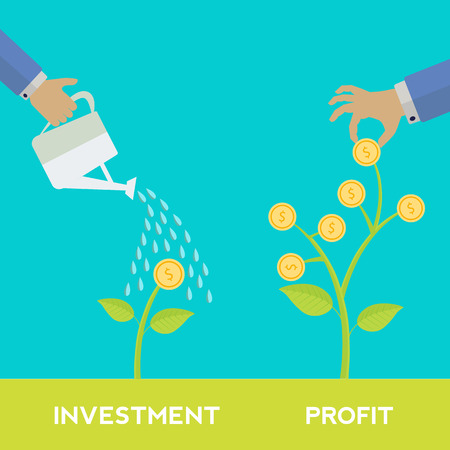Introduction to Crowdfunding for Small Businesses
Crowdfunding has become a game-changer for small businesses in the United States. It’s an innovative way for entrepreneurs to raise money by collecting small amounts from a large number of people, usually through online platforms. This approach not only helps business owners get the funds they need but also connects them with potential customers and supporters.
What Is Crowdfunding?
Crowdfunding is the practice of funding a project or venture by raising money from many people, typically via the internet. Instead of relying on one big investor or a bank loan, small business owners can tap into a broader community for support. There are different types of crowdfunding, such as rewards-based, equity-based, donation-based, and debt-based crowdfunding.
Types of Crowdfunding Explained
| Type | Description | Best For |
|---|---|---|
| Rewards-Based | Backers receive a product, service, or perk in return for their support. | Product launches, creative projects |
| Equity-Based | Investors receive shares in the company. | Startups looking for investors |
| Donation-Based | Supporters give money without expecting anything in return. | Nonprofits, community projects |
| Debt-Based (Peer-to-Peer Lending) | Funds are loaned with the expectation of repayment with interest. | Businesses seeking loans without traditional banks |
Why Has Crowdfunding Become Popular in the U.S.?
The rise of crowdfunding in America is tied to several factors. Traditional financing options like bank loans can be hard to get, especially for new businesses without a long financial history. Crowdfunding offers a more accessible path to capital. Plus, it allows business owners to validate their ideas and build a loyal customer base early on. Thanks to user-friendly platforms and social media sharing, it’s easier than ever to reach thousands—or even millions—of potential backers nationwide.
Unique Opportunities for American Small Business Owners
- Market Validation: Entrepreneurs can test demand before fully launching their product or service.
- Brand Exposure: Campaigns often go viral, bringing national attention to new businesses.
- Diverse Funding Sources: Access support from individuals all over the country rather than relying on local banks or investors.
- Community Building: Build relationships with future customers and advocates who believe in your mission.
- No Need for Collateral: Most crowdfunding options don’t require personal assets as security.
The Bottom Line: A New Way Forward
Crowdfunding has opened up fresh possibilities for small business owners across the United States. By harnessing the power of community and technology, entrepreneurs now have more tools than ever to turn their big ideas into reality.
2. Types of Crowdfunding Platforms
If you’re a small business owner in the United States, understanding the different types of crowdfunding platforms is key to picking the right fit for your venture. Crowdfunding isn’t one-size-fits-all—there are several models, each with its own rules, expectations, and success stories. Let’s break down the main types and see how real U.S. entrepreneurs have used them to fuel their dreams.
Reward-Based Crowdfunding
This is probably what most people picture when they think about crowdfunding. With reward-based platforms, backers pledge money to your project in exchange for a tangible or digital reward—often an early version of your product or some cool swag. It’s especially popular among creators, makers, and tech startups.
Popular Platforms:
- Kickstarter
- Indiegogo
Example:
A San Francisco startup launched a new smartwatch on Kickstarter. Backers who pledged $100 or more received the first edition of the product months before it hit stores—a win-win for both the business and early supporters.
Equity Crowdfunding
Instead of offering products or perks, equity crowdfunding lets backers become partial owners of your company by buying shares. This model is regulated by the SEC and is often used by startups looking to scale quickly.
Popular Platforms:
- WeFunder
- SeedInvest
- StartEngine
Example:
An Austin-based craft brewery used WeFunder to raise capital for expansion. Investors received equity in the company and could potentially profit if the business grows or gets acquired.
Donation-Based Crowdfunding
This type focuses on raising money for causes without expecting anything in return. While it’s more common for nonprofits, some small businesses use donation platforms during emergencies or community-driven projects.
Popular Platforms:
- GoFundMe
- Fundly
Example:
A family-owned restaurant in New Orleans set up a GoFundMe after a hurricane caused major damage. The local community pitched in to help rebuild so they could reopen their doors.
Debt-Based Crowdfunding (Peer-to-Peer Lending)
This model lets you borrow money from a pool of individual lenders instead of taking out a traditional bank loan. You’ll need to pay back the funds—with interest—but it’s often faster and more flexible than going through a bank.
Popular Platforms:
- LendingClub
- Kiva
- Funding Circle
Example:
A Detroit food truck owner turned to LendingClub for a $20,000 loan to upgrade his kitchen equipment. By repaying over time, he kept his business rolling without giving up any ownership.
| Crowdfunding Model | Main Benefit | Best For | U.S. Example Platform |
|---|---|---|---|
| Reward-Based | Get funding with no debt or loss of equity; engage customers early | Makers, inventors, creative projects | Kickstarter, Indiegogo |
| Equity-Based | Raise large amounts; investors share risk and reward | High-growth startups, tech companies | WeFunder, SeedInvest, StartEngine |
| Donation-Based | No repayment or rewards needed; driven by goodwill | Nonprofits, emergency needs, community projects | GoFundMe, Fundly |
| Debt-Based (P2P) | No equity lost; structured repayment terms; fast access to cash | Main Street businesses needing loans for growth or equipment | LendingClub, Kiva, Funding Circle |
The right crowdfunding model depends on your business goals, how much control you want to keep, and what you can offer supporters. Understanding these differences will help you choose the best path as you explore crowdfunding in the U.S.

3. Top U.S.-Based Crowdfunding Platforms
When it comes to crowdfunding for small businesses in the United States, choosing the right platform can make all the difference. Each platform offers unique features and caters to different types of projects and audiences. Here’s an in-depth look at some of the most popular and reputable crowdfunding platforms that American small business owners turn to:
Kickstarter
Kickstarter is one of the best-known crowdfunding platforms, especially for creative projects like product design, technology, art, and more. It’s an “all-or-nothing” platform—meaning you only receive funds if you meet your funding goal. Kickstarter is ideal for entrepreneurs who have a tangible product or creative idea they want to bring to life.
Main Features:
- All-or-nothing funding model
- Strong focus on creative projects
- Large backer community
- Project must be approved before launch
Indiegogo
Indiegogo is another major player in the crowdfunding world, known for its flexibility and wide variety of project categories. Unlike Kickstarter, Indiegogo offers both “all-or-nothing” and “flexible funding” options, so you can choose to keep whatever funds you raise even if you don’t hit your goal.
Main Features:
- Flexible or all-or-nothing funding models
- Open to a wide range of business types
- Option to continue raising funds after campaign ends (InDemand)
- User-friendly setup process
GoFundMe
GoFundMe is primarily known for personal causes, but it’s also used by many small businesses, especially during challenging times. It’s not focused on rewards-based campaigns—instead, it’s best for those seeking direct support from their community or customers without offering physical rewards.
Main Features:
- No all-or-nothing requirement
- Easy sharing tools for social media outreach
- Best for urgent needs or community support campaigns
- No platform fee (standard processing fees apply)
Other Noteworthy Platforms
Apart from the big names above, there are several other U.S.-based platforms worth considering depending on your business needs:
| Platform | Main Focus | Funding Model |
|---|---|---|
| Fundable | Small businesses & startups | Rewards & equity-based options; monthly subscription fee |
| SeedInvest | Equity crowdfunding for startups | Equity (investors get shares in your company) |
| Kiva U.S. | No-interest microloans for small businesses | Crowdfunded loans with 0% interest up to $15,000 |
| MainVest | Main Street businesses (restaurants, retail, etc.) | Revenue-sharing notes; investors share in future revenue |
| Patreon | Makers, creators & artists with ongoing content/services | Monthly subscriptions from supporters (“patrons”) |
Selecting the Right Platform for Your Business
The best crowdfunding platform for your small business depends on your goals, target audience, and type of project. Whether you want to launch a new product, support your business during tough times, or raise investment capital, there’s a U.S.-based crowdfunding site that fits your needs. Carefully review each platform’s rules, fees, and community focus before getting started.
4. How to Choose the Right Platform for Your Business
Crowdfunding can be a game-changer for small businesses in the United States, but picking the right platform is key to your success. Each platform has its own strengths, audience, and fee structures. Here’s how you can find the best fit for your business goals:
Identify Your Main Goal
Start by deciding what you want to achieve with crowdfunding. Are you looking to raise startup capital, validate a product idea, or build a loyal community around your brand? Some platforms are better for tech products, others for creative projects, and some are designed for social causes or local businesses.
Understand the Fee Structure
Crowdfunding platforms usually charge fees that can affect your bottom line. These fees may include platform fees (a percentage of the funds raised), payment processing fees, and sometimes additional costs for promotional tools. Here’s a quick comparison of popular platforms:
| Platform | Typical Fees | Main Focus |
|---|---|---|
| Kickstarter | 5% platform fee + 3-5% payment processing | Creative & Product Launches |
| Indiegogo | 5% platform fee + 3% payment processing | Tech & Innovation |
| GoFundMe | 0% platform fee + 2.9% payment processing | Personal & Social Causes |
| Mainvest | No upfront fee, revenue share post-funding | Local Businesses |
| SeedInvest | 7.5% placement fee + 5% equity fee | Equity Crowdfunding for Startups |
Know Your Audience
The people who visit each crowdfunding site have different interests. For example, Kickstarter attracts backers excited about new gadgets or creative work, while GoFundMe draws those who want to support personal stories or community projects. Think about where your ideal supporters spend their time online.
Questions to Ask Yourself:
- Is my project more product-focused or cause-driven?
- Do I want to offer rewards, equity, or just collect donations?
- What kind of story or pitch will resonate with this platform’s users?
- How much money do I need to raise and what are the minimum/maximum limits?
Leverage Platform Strengths
Each site offers unique features—like built-in marketing tools, analytics dashboards, or expert guidance—that can help boost your campaign. For instance:
- Kickstarter: Great for early buzz if you have a visual prototype.
- Mainvest: Ideal if you want local investors in your neighborhood business.
- SeedInvest: Suited for startups ready to give away equity for higher funding potential.
Pro Tip:
Dive into successful campaigns similar to yours on each platform. See what worked and what didn’t—this can help you tailor your approach!
Selecting the right crowdfunding platform isn’t just about signing up; it’s about matching your vision with a community that believes in it and a structure that supports your growth.
5. Tips for a Successful Crowdfunding Campaign
Actionable Strategies to Boost Your Campaign
Launching a crowdfunding campaign in the U.S. can be a game changer for small businesses, but standing out takes more than just posting your idea online. Here are proven strategies to help you maximize your chances of success:
1. Tell Your Story with Authenticity
American backers love authenticity and passion. Share the journey of your business—why you started, what drives you, and how their support will make a difference. Use clear, relatable language and show your face in videos or photos. Don’t be afraid to let your personality shine through!
2. Set Realistic and Transparent Goals
Set a funding goal that covers your needs but isn’t overly ambitious. Clearly break down where the money will go—transparency builds trust with U.S. backers.
| Category | Recommended Approach |
|---|---|
| Funding Goal | Keep it achievable; explain calculations |
| Use of Funds | Show detailed allocation (e.g., 40% production, 30% marketing) |
3. Create Compelling Rewards
Incentives matter! Offer rewards that appeal to American consumers—think exclusive products, early access, or branded swag. Make sure reward tiers are easy to understand and deliver on time.
4. Build Early Momentum with Your Network
The first 48 hours are crucial in the U.S. market. Mobilize friends, family, and loyal customers before launch so you hit the ground running. Early support signals credibility to new backers.
5. Engage Regularly and Transparently
Keep your community updated with honest progress reports, even if things don’t go as planned. Americans value communication and accountability throughout the campaign.
6. Leverage Social Media and Local Press
Promote your campaign across platforms like Instagram, Facebook, LinkedIn, and even TikTok. Reach out to local newspapers, bloggers, and business groups—they often love supporting local entrepreneurs.
Cultural Tip: Speak Directly and Stay Positive!
American backers respond well to direct communication and a positive attitude. Avoid jargon or over-promising—be straightforward about challenges and solutions.
Crowdfunding Best Practices Table for U.S. Small Businesses
| Best Practice | Description | Cultural Note |
|---|---|---|
| Use Short, Clear Videos | Create a 1-2 minute video explaining your business and campaign | Americans prefer concise storytelling with visuals |
| Offer Tiered Rewards | Diversify incentives at different price points | Cater to both casual supporters & super fans |
| Acknowledge Every Backer | Send personal thank-you messages or public shout-outs | A little gratitude goes a long way in U.S. culture! |
| Update Frequently | Post weekly updates at minimum during campaign period | Lack of communication may hurt trust & momentum |
| Stay Compliant with Platform Rules | Review guidelines for legal/financial requirements before launching | Avoid surprises by reading fine print on major U.S. platforms like Kickstarter or Indiegogo |

